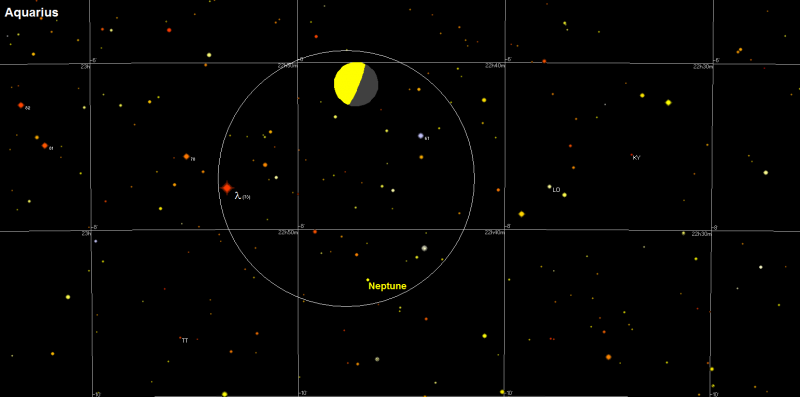2015 June 5
A signpost to Neptune in the morning sky
Locating the outer planets, the ice giants Uranus and Neptune, can sometimes be tricky, particularly for the binocular user with no firm platform for star hopping or if using a mount without go-to or setting circles. What is needed to make things easier is a bright sky marker to act as a reference point. A few weeks ago Venus acted as such a reference beacon for Uranus and on June 9 the Moon acts as a suitable marker for Neptune.
Neptune at magnitude 7.9 and with a disk diameter of just over 2 arcseconds will appear star-like through low power binoculars, but if you are using a telescope it should show a tiny bluish disk while the stars remain as points of light – albeit slightly bloated and wobbly ones if the seeing is poor!
This activity all takes place in the very early morning so is particularly suited to insomniac observers. The start of civil twilight on June 9 is 02:50UT with the Sun rising at 03:37UT (times based on my Essex village of Thorpe-le-Soken). The Moon will be 56% illuminated at this time, and Neptune will be found 2.5 degrees below it, around 17 degrees above the south-eastern horizon at 02:30UT (03:30 BST). There will be some field stars to confuse you, in particular magnitude 3.8 lambda Aquarii which lies a similar distance below the Moon but 2 degrees to the east of Neptune.
The star chart shown here (produced using SkyMap Pro 11) for 02:30UT should allow you to locate Neptune without difficulty. The circle on the chart is for a 3 degree field.
Although Neptune will remain visible in the morning sky for the next few weeks, the Moon will unfortunately move on and no longer point the way, so let’s hope for clear skies on June 9.
| The British Astronomical Association supports amateur astronomers around the UK and the rest of the world. Find out more about the BAA or join us. |
